Gígjökull is the largest outlet glacier of Eyjafjallajökull, an ice-capped volcano that became famous when it erupted in 2010. It impaired Gígjökull, but the glacier recovered spectacularly.
Eyjafjallajökull volcano is covered by glaciers and its 2.5 km wide crater is filled with 200 m thick ice. The rim is lowest in the north, so the ice flows in that direction and forms the steeply descending Gígjökull. The glacier is 4 km long and terminates at 200 m in a large basin surrounded by unusual high moraines.
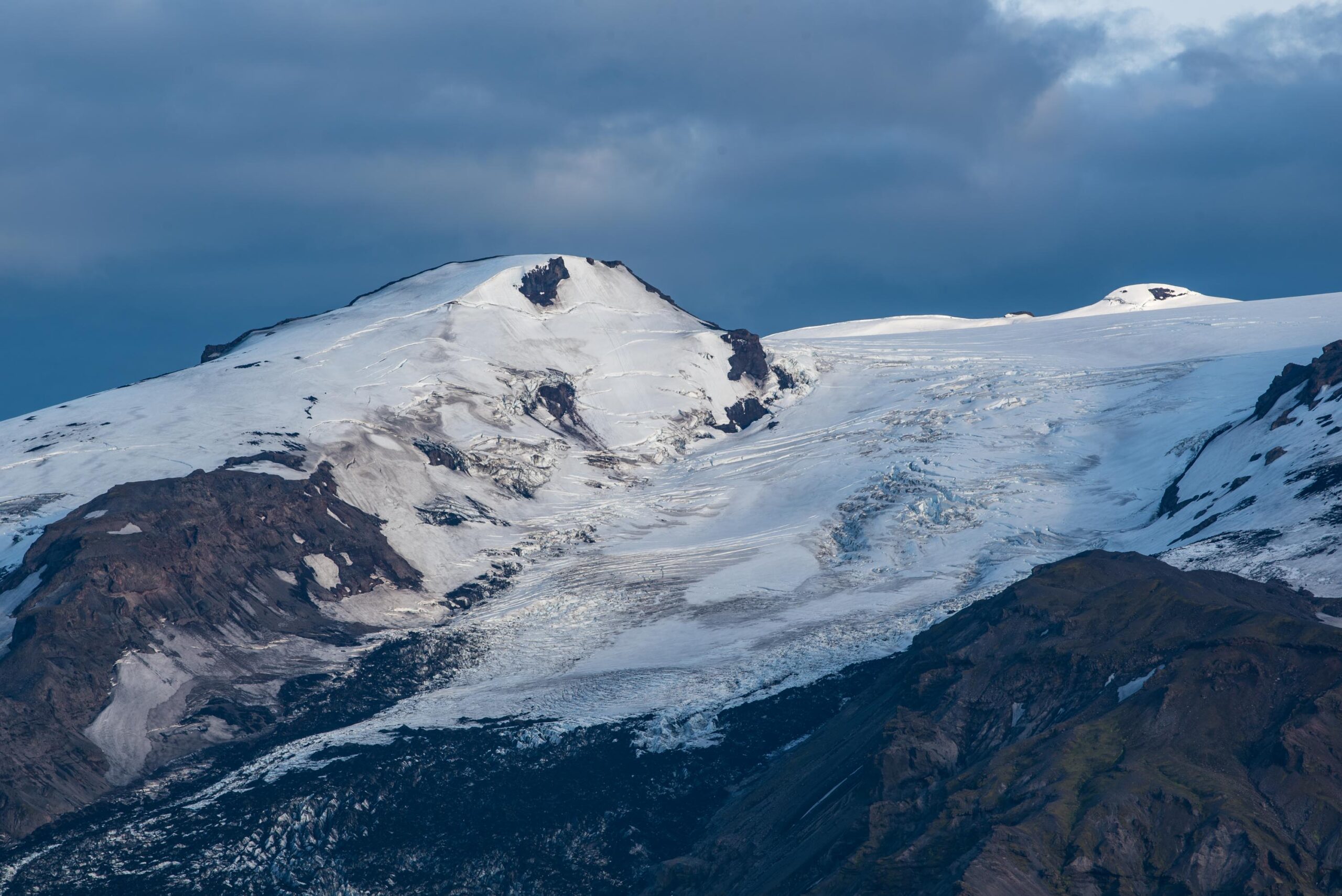
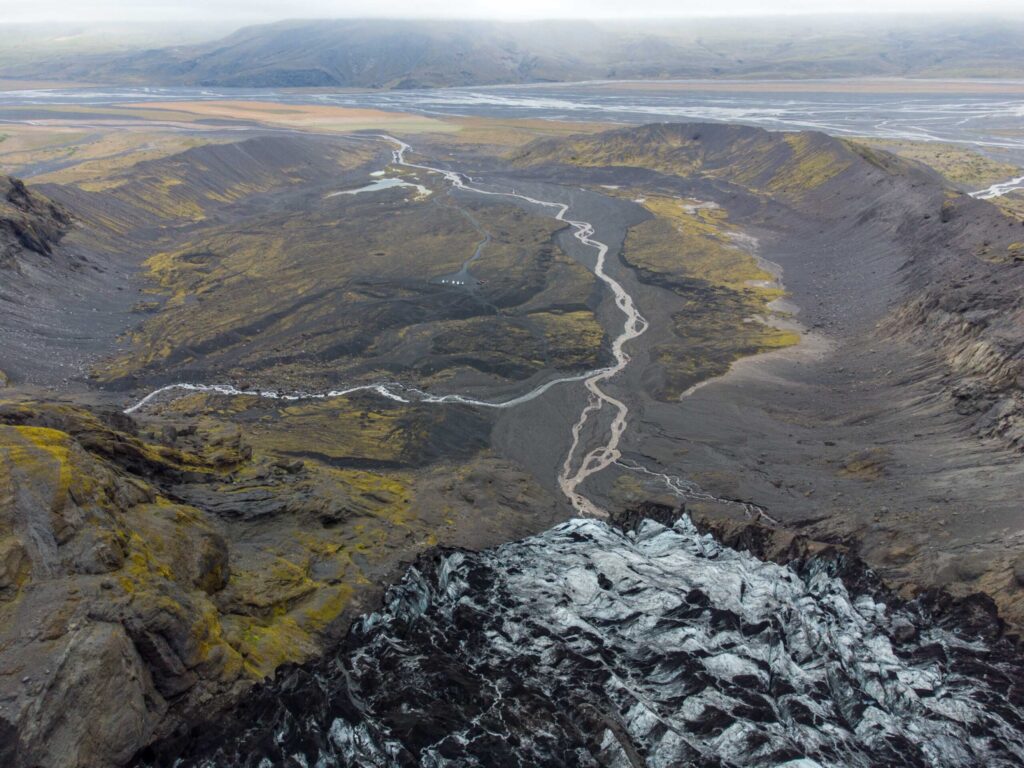
Gígjökull’s moraine is a large arcuate ridge up to 70 m high that was formed during three periods of glacier advance. The first advance occurred some 2000 years ago and the second one around the year 1200. Remarkably, the advance around 1200 has not been documented at other Icelandic glaciers and challenges the common idea of a Medieval Warm Period that should have lasted the entire period from the 9th up tot the 13th century (Kirkbride and Dugmore, 2008).
The third, most extensive advance occurred in the 18th and 19th century. In this period of 200 years, Gígjökull had repeated highstands. The glacier filled the entire basin and laid on top of the moraine, with meltwater streams at the distal slopes. This large composite moraine was formed over hundreds of years during the three periods of advance and is composed of sediments that have been transported from the basin underneath the glacier.
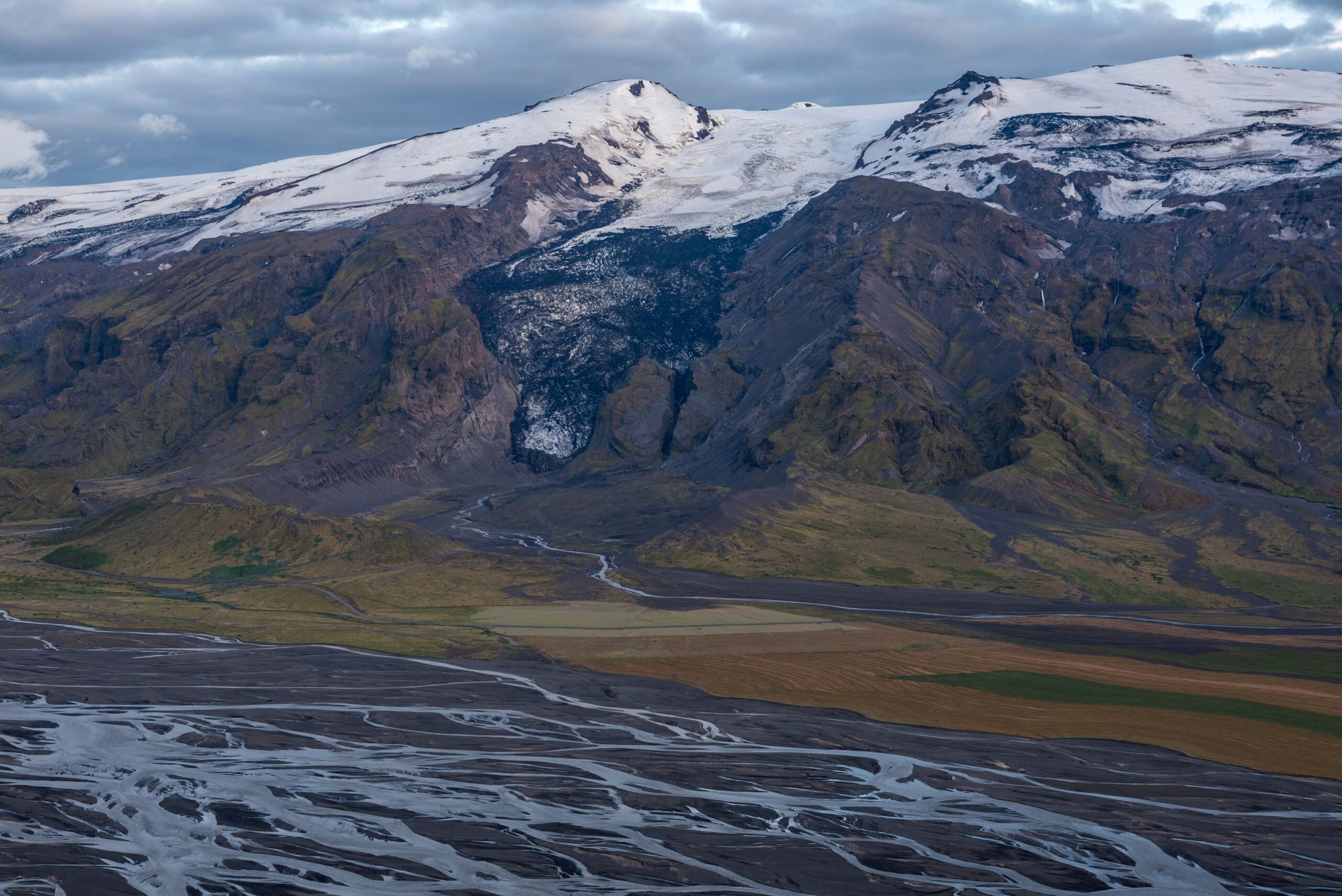
In the 1930’s Gígjökull began to retreat and the basin was uncovered. It filled with water, thereby creating a new lake. For a long time, the lake was confined to the northwestern part of the basin. But from the beginning of this century the glacier rapidly collapsed. By 2009 the lake occupied practically the entire basin, 1 km in length. But things were about to change.
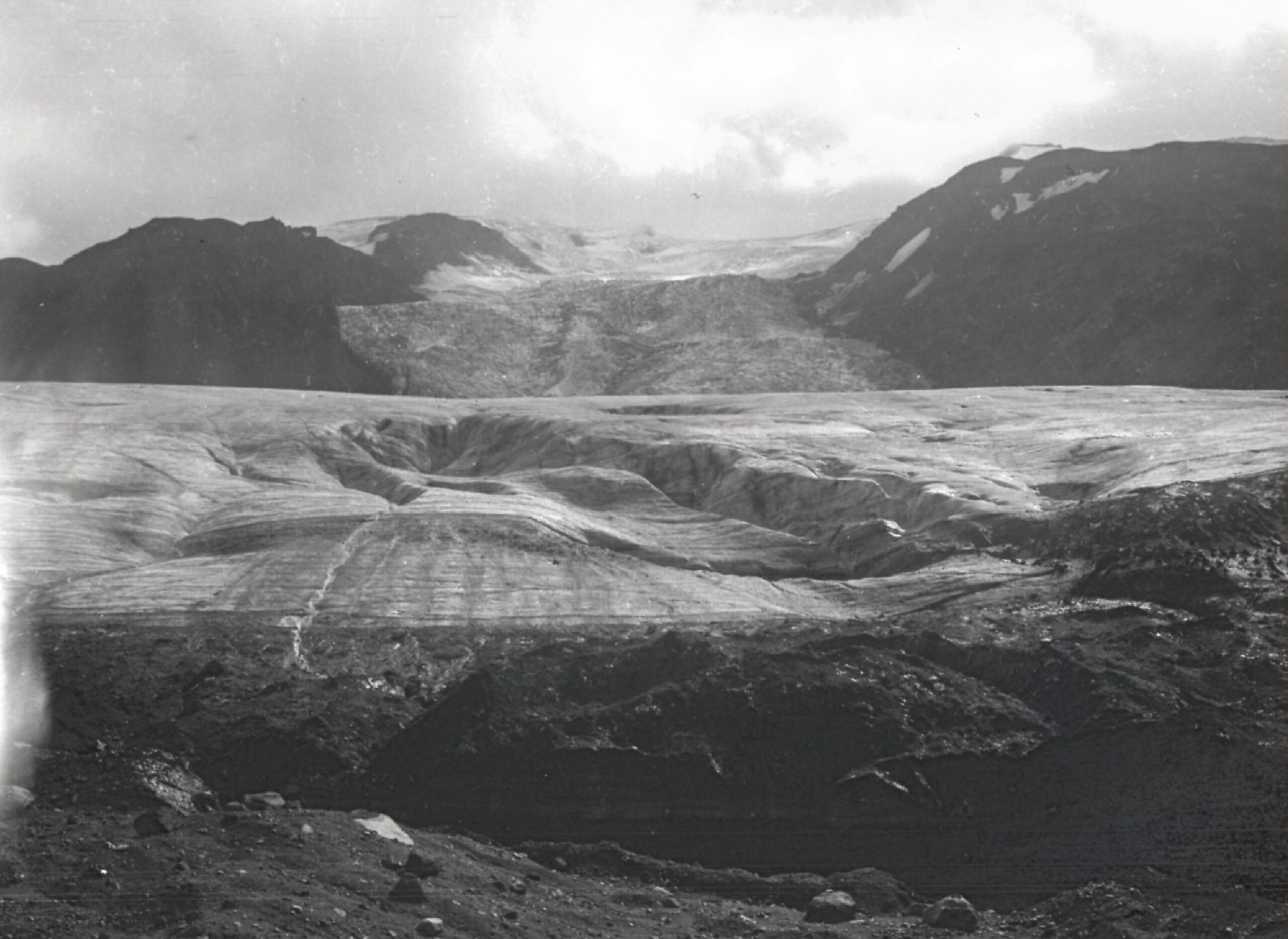

Gígjökull in circa 1930 (left) and 2023. Photographer 1930: Jón Eyþórsson, Jöklarannsóknafélag Íslands.
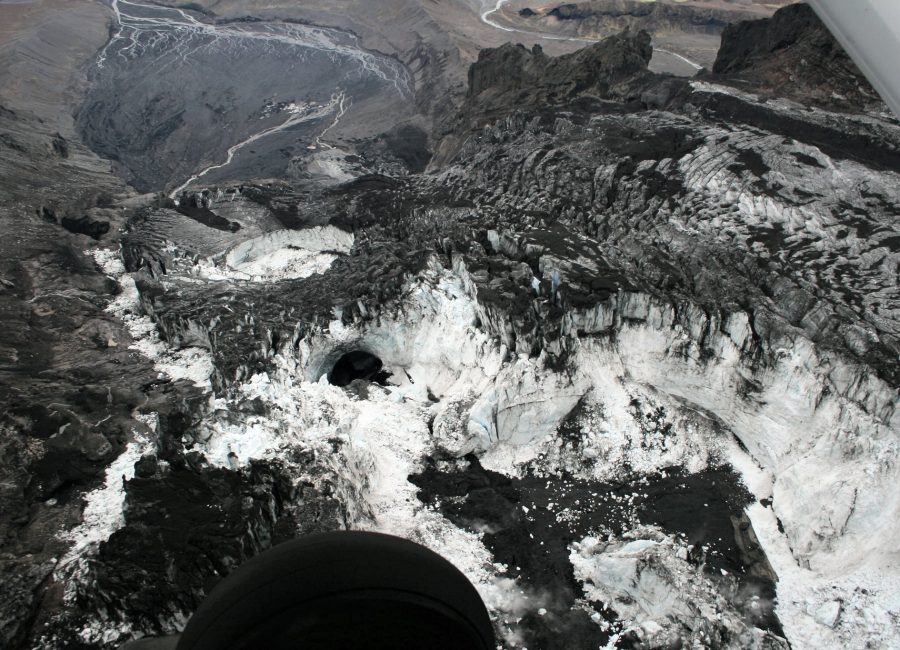
In March 2010 the Eyjafjallajökull volcano erupted. An explosive 39-day long eruption began in the summit caldera on April 14, disrupting air traffic in Europe. Of the emitted lava, most resided inside the caldera, but a quarter escaped the caldera and created a 3 km long lava flow underneath Gígjökull. In total, over a cubic kilometer of ice was melted by the lava. A fully open ice canyon was formed where the lava melted the entire column of ice, that had been 60-100 m thick. The lava stopped 300 m above the basin. Meltwater issued from Gígjökull was steaming hot, while it is normally at freezing point (Oddsson et al., 2016).
The eruption produced over 140 glacial outburst floods (jökulhlaups). Together, they deposited large quantities of sediment and ice into the basin in front of Gígjökull. The lake disappeared under a layer of 60 m new material. The buried ice slowly melted and created pits called kettle holes (Dunning et al., 2013). In just one month, the large lake was replaced by an outwash fan.
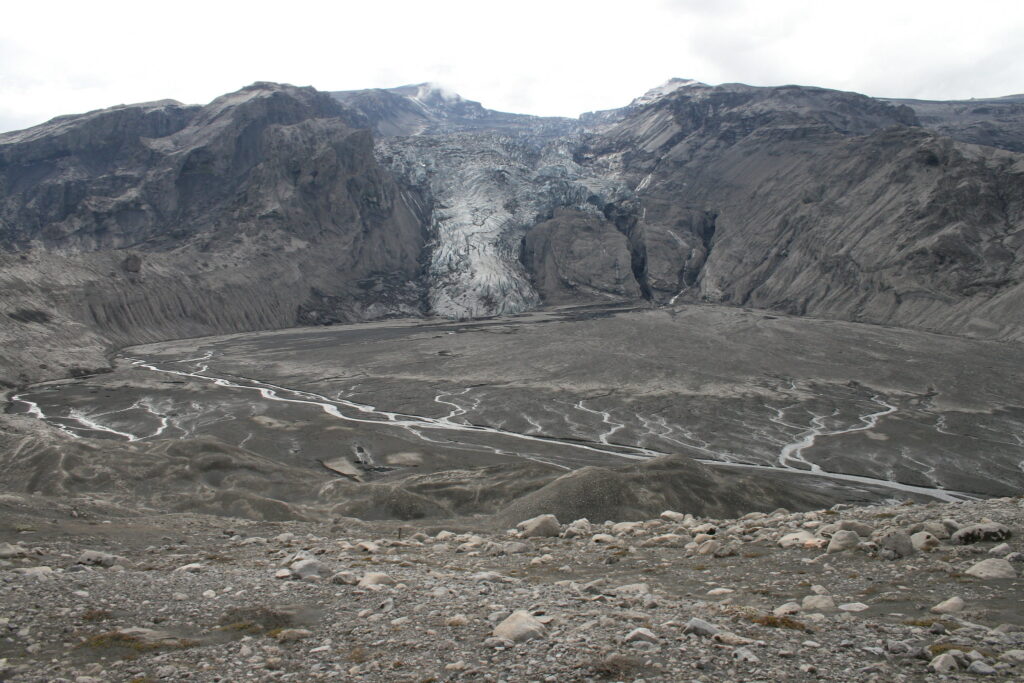
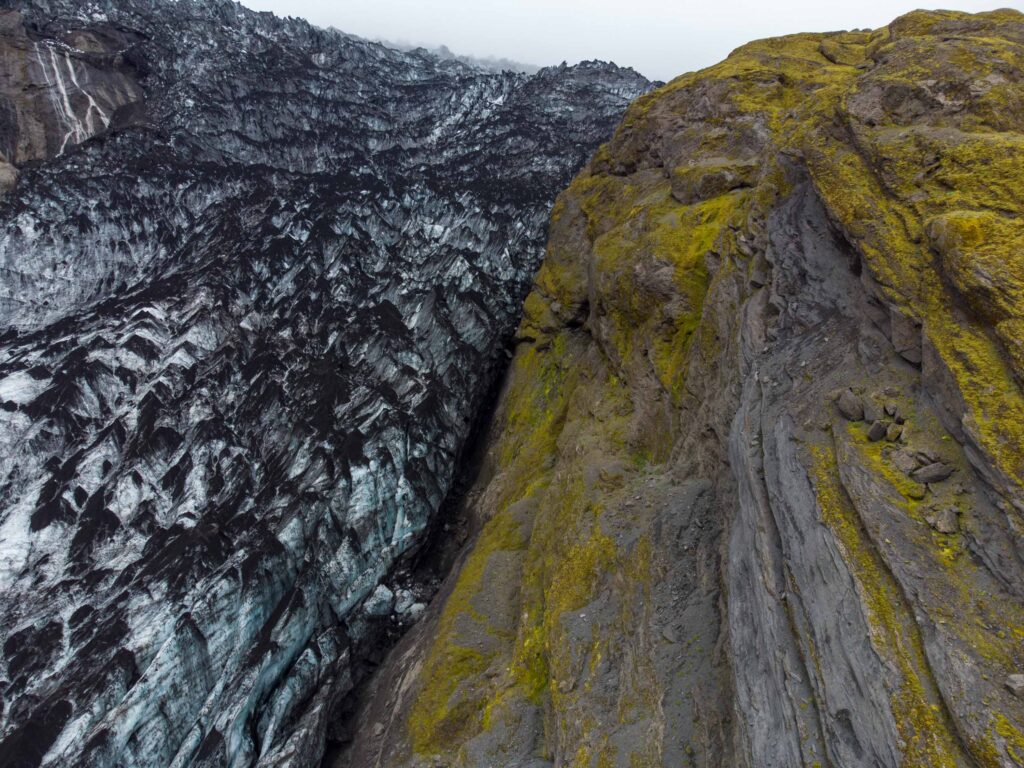
In the years following the eruption, Gígjökull made a miserable impression. As the upper and middle part were partly melted by the lava, the snout received little or no ice and downwasted. It completely disappeared from the basin. Ash and tephra covered most of the ice, which can have both positive (insulating) and negative (lowering reflectivity) effects on the glacier (Möller et al., 2019).
Despite all the destruction, Gígjökull was able to recover. Snow filled the crater again, probably helped by an increase in snowfall in the past decade. Subsequently, ice started to flow down. While the glacier snout was dying down below, fresh ice was on its way, moving about 200 m a year. In 2021 the first fresh ice arrived at the icefall, the last hurdle before the basin. The next year Gígjökull made it down the 300 m high icefall.
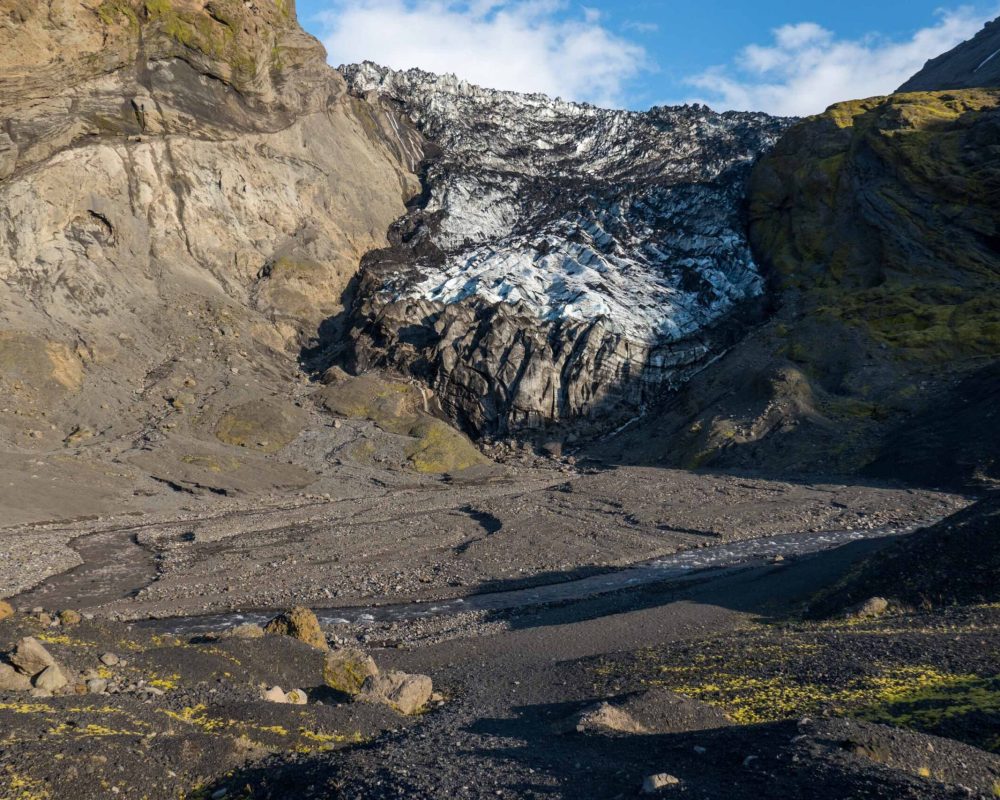
Between 2022 and 2023 Gígjökull advanced another 200 m and returned onto the plain, although it hasn’t quite reached the unconfined part yet. Gígjökull will by no means reach the arcuate moraine in this warming climate, but it is interesting to see how much further the glacier will be able to advance. If it does and reaches the flatter, unconfined plain, then splaying crevasses could form and new moraines could be created. So let’s keep a close eye on Gígjökull!
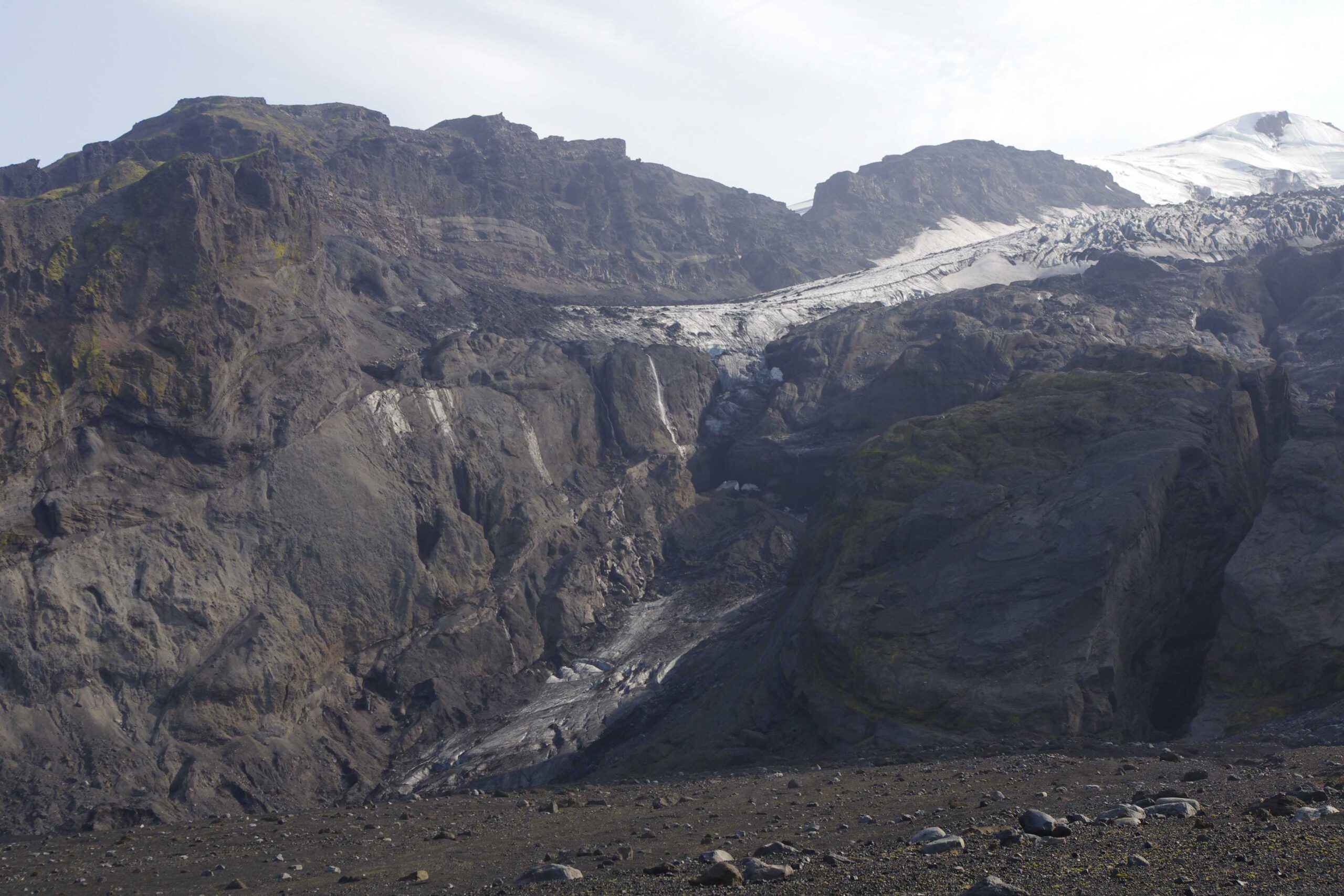

De Gígjökull was smaller in 2017 (left) than in 2023. Source 2017: SNappa2006 via Flickr.
Search within glacierchange: